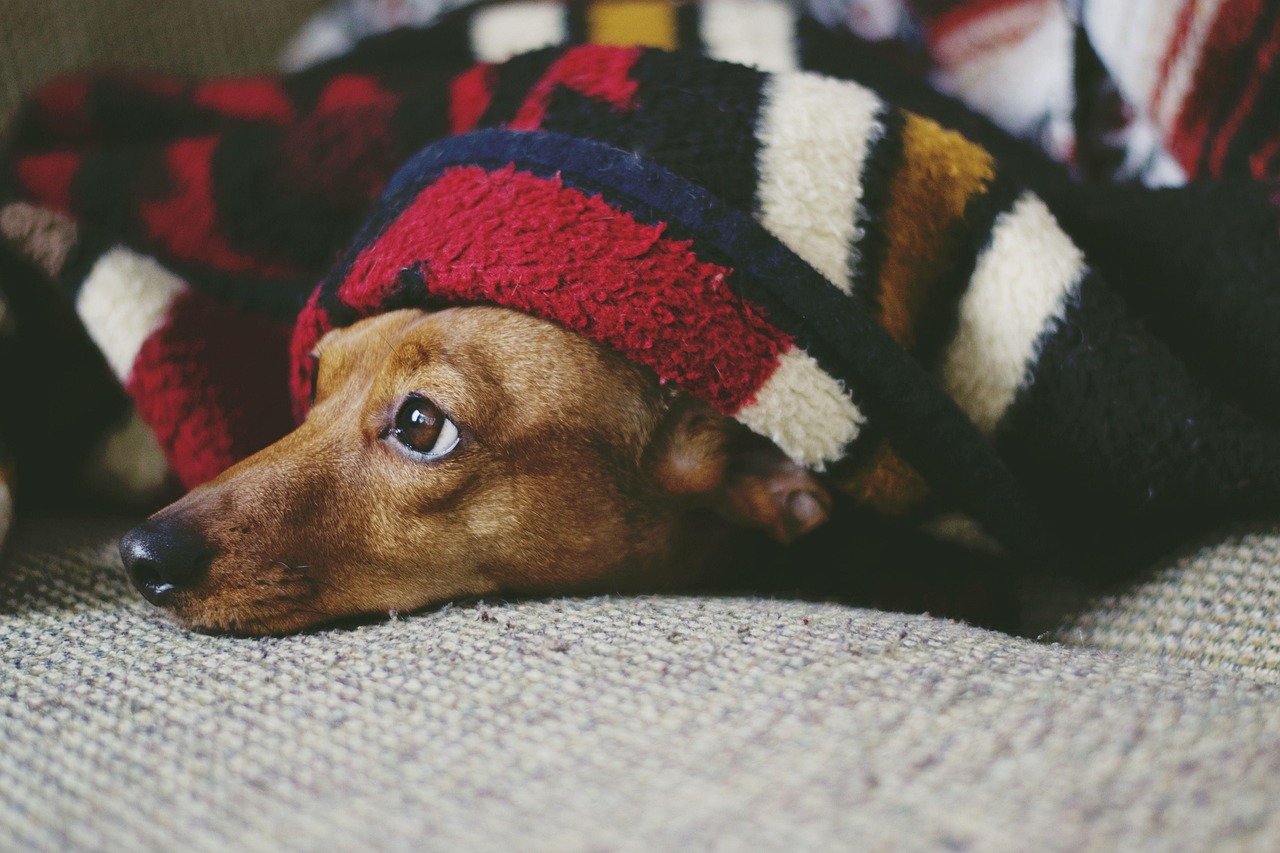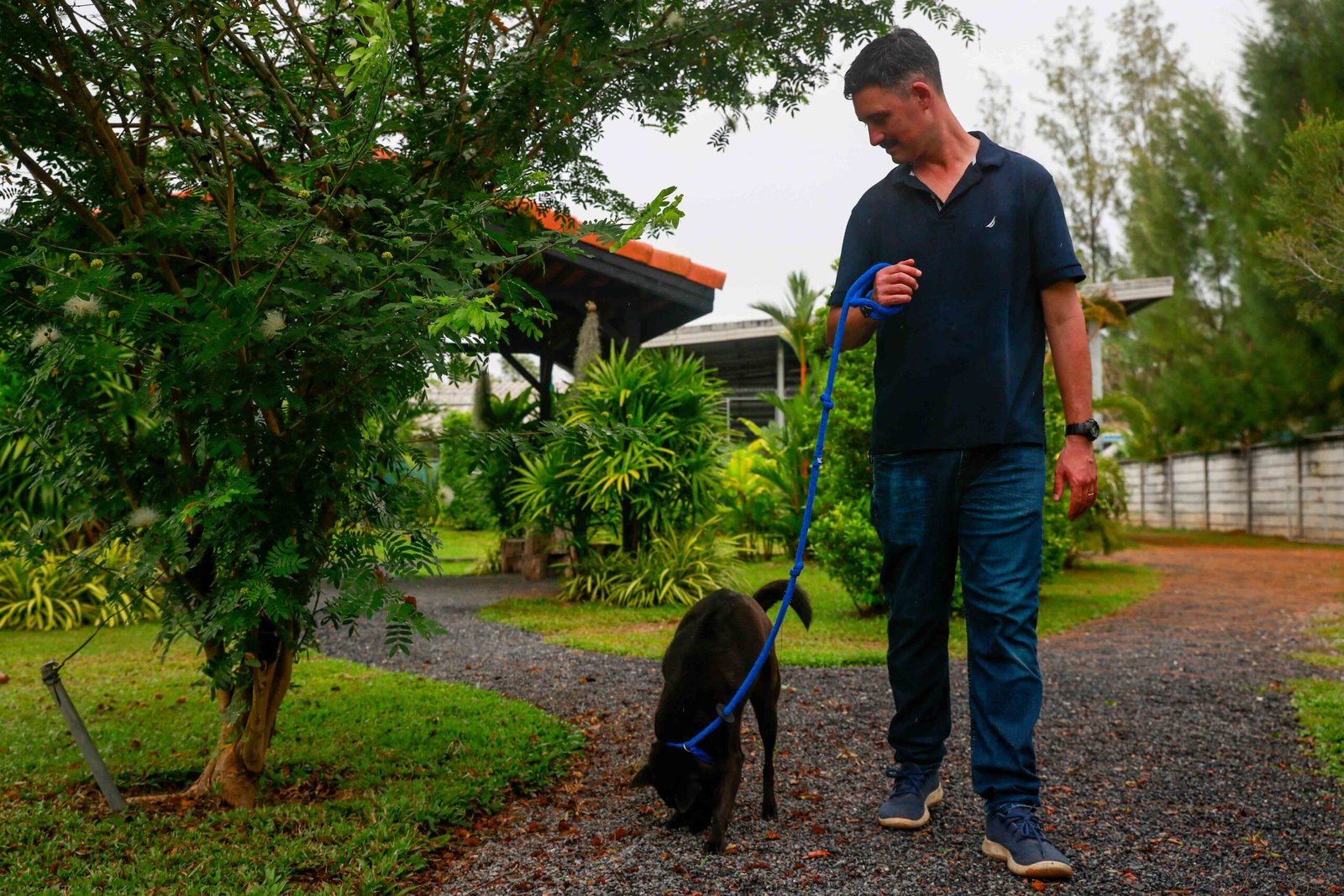It’s a heartbreaker: your dog hears the first distant rumble, and suddenly, their world turns upside down. Midwest thunderstorms are no joke—they can appear out of nowhere, rattling homes with thunderclaps that shake the windows and flash lightning so bright it lights up the night. If you’re a dog lover, you know the look in your pup’s eyes when a storm rolls in—wide, worried, sometimes trembling. It’s in those moments that you wish you could speak their language and promise them, “It’s going to be alright.” But while we can’t control the weather, we can help our four-legged friends feel a little safer when the sky puts on its wild show. Let’s look at ten real, practical ways to ease your dog’s anxiety during those booming Midwest storms.
Create a Safe, Cozy Hideaway
Every dog needs a place where they feel protected—a den away from the chaos. During thunderstorms, set up a safe space in your home where your dog can retreat. This could be a quiet room, a covered crate, or even a closet filled with their favorite blankets and toys. The goal is to make this spot feel comforting and secure. Add a piece of your clothing for extra reassurance, since your scent is calming to them. Keep the area dimly lit and play some gentle background noise, like a fan or soft music, to mask the thunder. It’s amazing how just having a “storm cave” can help your dog cope with their anxiety.
Use Calming Sounds or Music
Music isn’t just for humans—dogs can benefit from it, too! There are special playlists and albums designed specifically to soothe anxious pups. Classical music or calming nature sounds can distract your dog from the thunder and create a more peaceful atmosphere. If you notice certain songs seem to calm your dog more than others, make a playlist just for stormy days. Sometimes, even turning on the TV or a white noise machine can help drown out the scary sounds outside. You might be surprised how a simple change in background noise can shift your dog’s focus and help them relax.
Try a Thundershirt or Anxiety Wrap

Thundershirts and anxiety wraps work a bit like a gentle hug, applying constant, calming pressure to your dog’s body. Many pet parents swear by these snug garments during storms. They’re easy to put on and can make a world of difference for some dogs. The sensation is like being swaddled, helping your dog feel more secure. If you don’t have a commercial wrap, you can even try a DIY version using a snug t-shirt. Just remember, not every dog responds to pressure wraps, but for those who do, it can be life-changing during those loud nights.
Stay Calm and Offer Comfort
Your dog takes cues from you, so if you’re anxious, they’re likely to be anxious, too. Try to stay calm and relaxed, even if the storm is making you nervous. Speak to your dog in a gentle, reassuring voice. Offer soft pets or cuddles if they seek it, but don’t force interaction if your dog prefers to be alone. Some dogs want to be held, while others just need to know you’re nearby. Avoid scolding or punishing your dog for their reactions—fear isn’t something they can control. Instead, let them know you’re their safe haven.
Distract With Fun Activities
Keeping your dog’s mind busy is one of the best ways to help them forget about the storm outside. Break out their favorite puzzle toys, chew treats, or play a gentle game of tug or fetch in a safe indoor space. Sometimes, a stuffed Kong filled with peanut butter or treats can keep them occupied for a long time. Even practicing simple training commands—like sit, stay, or shake—can redirect their attention. The goal isn’t to ignore their fear, but to give their brain something else to focus on while the thunder rumbles in the distance.
Try Pheromone Diffusers or Sprays

Dogs communicate with each other through pheromones, and scientists have found ways to mimic these soothing scents. Products like Adaptil release calming pheromones that can help reduce anxiety. Plug-in diffusers, sprays, or even collars can be used in rooms where your dog spends time during storms. The effect isn’t instant, but many dog owners notice a gradual sense of calm over repeated uses. While it may not work for every pup, it’s a gentle, non-invasive option to try, especially if your dog is very sensitive to environmental changes.
Keep Curtains Closed and Lights On

Lightning flashes can be just as frightening as thunder, especially for dogs with a strong startle reflex. Close your curtains or blinds to block out the sudden bursts of light. Turning on lamps or overhead lights can further minimize the contrast between the lightning and your indoor environment. This small adjustment helps reduce the visual impact of the storm, making it less overwhelming for your dog. In my house, we always dim the lights and close the drapes when we hear thunder in the forecast—it’s such a simple thing, but it really helps.
Stick to Routines and Schedules

Dogs thrive on routine. When a storm disrupts their daily rhythm, it can make everything seem even scarier. Try to keep feeding, walks, and playtime on their usual schedule, even if you have to adjust for the weather by playing indoors or taking shorter walks. Regular routines provide a sense of predictability and control, which is comforting during stressful times. If you know a storm is coming, get some extra playtime in beforehand to help tire your dog out. A tired dog is often a calmer dog when the thunder starts to roll.
Consult Your Veterinarian About Medications

For some dogs, anxiety during thunderstorms can be severe and persistent, no matter how many home remedies you try. In these cases, it’s wise to talk to your veterinarian. There are safe, effective medications that can help ease your dog’s storm-related stress. Your vet can recommend options tailored to your dog’s size, age, and health. Medication isn’t the right answer for every dog, but for those with extreme anxiety, it can mean the difference between panic and peace. Don’t be afraid to ask for help—your dog’s mental well-being is just as important as their physical health.
Start Training With Desensitization
Desensitization is a fancy word for gradually getting your dog used to something that scares them—in this case, the sounds of thunderstorms. You can use recordings of thunder at a very low volume and slowly increase it over time, always pairing the sounds with treats, praise, or play. This process can take weeks or even months, but it builds your dog’s confidence and reduces fear over the long term. Think of it like teaching a child to swim by starting in the shallow end and working up to deeper water. It takes patience, but the results can be amazing.
Helping your dog stay calm during Midwest thunderstorms doesn’t have to feel overwhelming. With a little preparation—like creating a cozy safe space, using calming tools, and offering lots of reassurance—you can make a big difference in their stress levels. Every pup is different, so it may take some trial and error to find what works best. But with patience and love, your dog will start to feel safer, even when the thunder rolls.

Andrew Alpin from India is the Brand Manager of Doggo digest. Andrew is an experienced content specialist and social media manager with a passion for writing. His forte includes health and wellness, Travel, Animals, and Nature. A nature nomad, Andrew is obsessed with mountains and loves high-altitude trekking. He has been on several Himalayan treks in India including the Everest Base Camp in Nepal.





